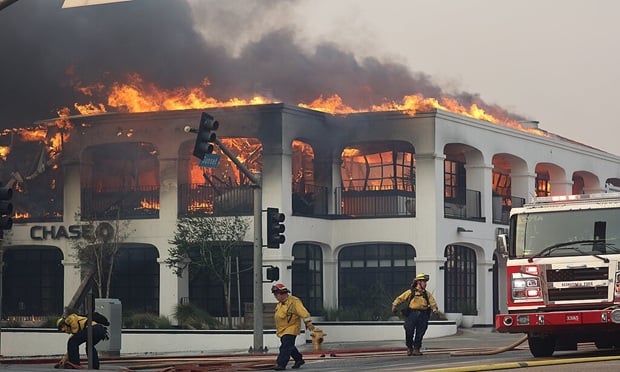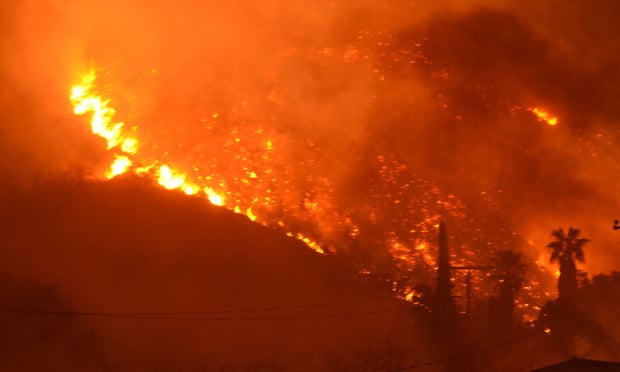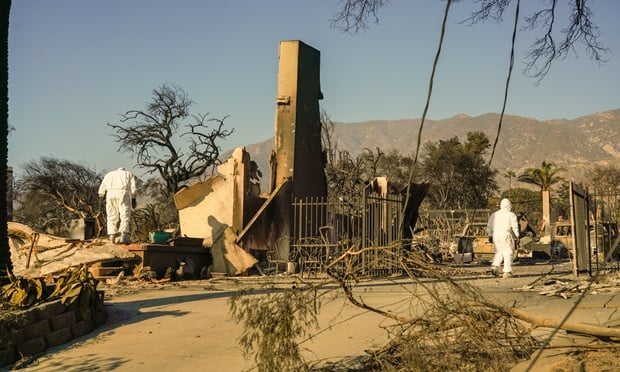There is a growing awareness that good land use and planning can do much to reduce the impact of natural catastrophes.
Communities that understand the risks they face and mitigate those risks become resilient and can experience sustainable outcomes when affected by natural hazards.
Around the world many communities are working hard to become more resilient, but 85 percent of people exposed to natural catastrophes live in developing countries where it can be challenging to achieve good land use and planning. Continued property development is inevitable, and the worth of the exposure at risk will rise. Only increased resilience can temper the impact of natural disasters.
Related: 12 ways the U.S. is using nature to protect against natural disasters
The root cause of a disaster that can occur after a natural event is the underlying vulnerability in human systems, not the natural hazards that expose them. Many land-use choices can be significant factors in their effect. Deforestation, for example, can increase the risk of landslides and flooding. The biggest effects, however, arise from our desires to congregate in towns and cities.
Click next to read about five types of land development that are vulnerable to natural disasters:
A flash flood in Toowoomba, Queensland, Australia, in 2011. (Photo: Wikimedia Commons)
1. Urbanization
It is thought that by 2050, two-thirds of the global population will be city dwellers.
They take up just two percent of the planet’s surface, but as a World Economic Forum report noted, “The concentration of people, assets, critical infrastructure and economic activities in cities exacerbates the potential of natural catastrophes to cause unprecedented damage.” Dense development enhances the impact of many perils because they can damage more property in an urban setting than a rural one.
Development increases risk in other ways too. In a natural setting for example, most rain will infiltrate the ground, but in an urbanized area, as much as 90 percent will run off. Roads and other impermeable surfaces reduce natural drainage and speed flood flows. According to the Federal Emergency Management Agency, this can make a 10-year storm produce the runoff equivalent of a 25-year storm and cause flash floods.
Related: How Hurricane Sandy created 'the perfect storm'
Boston’s Back Bay area is built on reclaimed salt marshes and contains many masonry structures vulnerable to liquefaction damage in the event of an earthquake. (Photo: Wikimedia Commons)
2. Location, location, location
Many of our most successful settlements have been established in coastal areas and along rivers where fertile agricultural land, transportation, water and trade are available. Old development choices constrain the resilience of such communities.
Major cities around the rim of the Pacific Ocean, for example, are close to active fault lines and have significant earthquake risk. Soft soils, which often accumulate along river banks, and in river deltas — prime locations for development — can amplify ground motion experienced during a temblor and may cause significant liquefaction damage.
Related: U.S. taps supercomputer to help predict dangerous flooding
Areas reclaimed for development can also be at risk from liquefaction. In the United States, Boston’s Back Bay is a prime example. Fortunately, infilled land compacts and slowly becomes less vulnerable.

Storm surge on Queensland's Gold Coast, with the high-rise development of Surfers Paradise in the background. (Photo: Bruce Miller/Commonwealth Scientific and Industrial Research Organisation)
3. Flocking to the coast
The density of the world’s near-coastal population is about three times higher than the global average, and it is increasing.
Population growth leads to property development and property values increase over time. Within the United States, the insured value of property in coastal states has historically doubled every decade.
Coastal communities generally occupy low-lying locations with direct access to the sea, and this exposes them to damage from wind and water, which is magnified by rising sea levels and land subsidence. In the United States, sea level rise and severe weather events are thought likely to increase the portion of coastal areas at risk of flooding 55 percent this century, according to a report commissioned by FEMA.
Related: 6.8 Million Homes at Risk for Hurricane Storm Surge
The Oderbruch floodplain along the Polish-German border during severe flooding that forced 13,500 people to evacuate in August of 1997. (Photo: Edgar Schoepal/AP Photo)
4. Inland flood
Because land for construction is scarce, riverine floodplains are another area where development is growing.
Almost a fifth of the population of Hungary lives on floodplains, for example, and in England, almost one sixth of all properties are located on floodplains having at least a 1-in-1,000 risk of floods.
A recent report from the European Environment Agency claims that more than 80 percent of Europe’s floodplains have been barricaded by flood defenses, drained and built on; it predicts a five-fold increase in flood damage by 2050. Of this additional flooding about one fifth will be attributable to more intense rainfall, and the remainder to development on floodplains. Flood risk, however, is not confined to floodplains; in the United States for example, 30 percent of National Flood Insurance Program insured losses occur off floodplains.

Remains of the Super 8 hotel in Fort McMurray, Alberta, Canada on May 4, 2016. (Photo: Wikimedia Commons)
5. Wildfire
The number of homes in the wild land-urban interface — where natural vegetation meets urban expansion — is increasing, and in such locations successful fire prevention and suppression efforts can be hard to achieve.
Risk has been exacerbated by several factors, including, ironically, the practice of extinguishing wildfires as quickly as possible, which can enable brush to grow and furnish additional fuel.

Insured losses from California wildfires, 1964-2008. (Source: AIR Worldwide)
The data suggest an upward trend in U.S. wildfire losses over the last two decades, despite the fact that the frequency of wildfires has been relatively steady, indicating that the increase is driven primarily by the growing value of exposed properties.
Jonathan Kinghorn is a senior science writer at Boston-based catastrophe modeling firm AIR Worldwide.
Read more: Alberta wildfires costliest insured disaster ever in Canada
Want to continue reading?
Become a Free PropertyCasualty360 Digital Reader
Your access to unlimited PropertyCasualty360 content isn’t changing.
Once you are an ALM digital member, you’ll receive:
- Breaking insurance news and analysis, on-site and via our newsletters and custom alerts
- Weekly Insurance Speak podcast featuring exclusive interviews with industry leaders
- Educational webcasts, white papers, and ebooks from industry thought leaders
- Critical converage of the employee benefits and financial advisory markets on our other ALM sites, BenefitsPRO and ThinkAdvisor
Already have an account? Sign In Now
© 2025 ALM Global, LLC, All Rights Reserved. Request academic re-use from www.copyright.com. All other uses, submit a request to [email protected]. For more information visit Asset & Logo Licensing.











